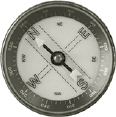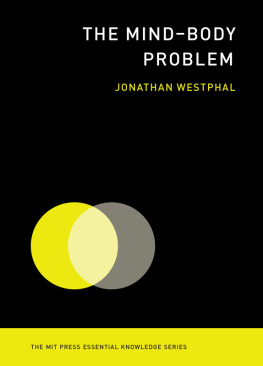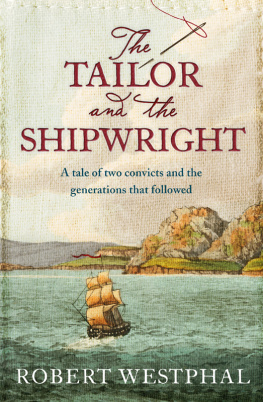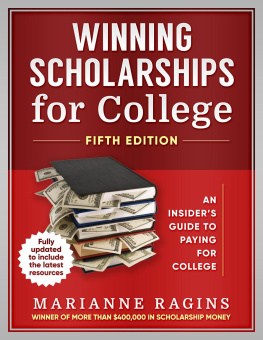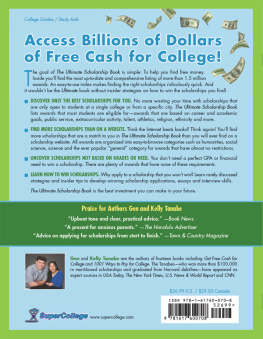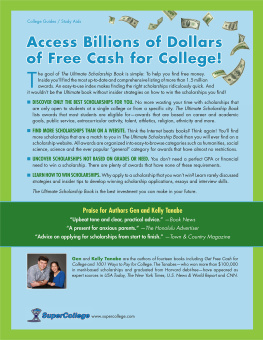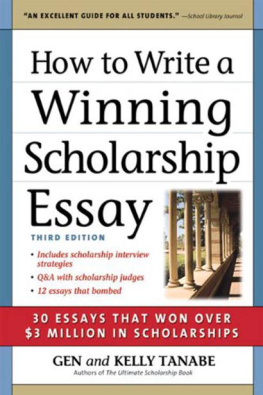Science
Dictionary
for kids
LAURIE E. WESTPHAL

PRUFROCK PRESS INC.
WACO, TEXAS
Copyright 2009 Prufrock Press Inc.
Edited by Lacy Compton
Cover and Layout Design by Marjorie Parker
ISBN-13: 978-1-59363-462-9
ISBN-10: 1-59363-462-5
No part of this book may be reproduced, translated, stored in a retrieval system, or transmitted, in any form or by any means, electronic, mechanical, photocopying, microfilming, recording, or otherwise, without written permission from the publisher.
Printed in the United States of America.
At the time of this books publication, all facts and figures cited are the most current available. All telephone numbers, addresses, and Web site URLs are accurate and active. All publications, organizations, Web sites, and other resources exist as described in the book, and all have been verified. The author and Prufrock Press Inc. make no warranty or guarantee concerning the information and materials given out by organizations or content found at Web sites, and we are not responsible for any changes that occur after this books publication. If you find an error, please contact Prufrock Press Inc.

Prufrock Press Inc.
P.O. Box 8813 Waco, TX 76714-8813
Phone: (800) 998-2208
Fax: (800) 240-0333
http://www.prufrock.com
Dedication
Special thanks and lots of love to:
Ken and Irene Westphal, my mom and dad.
You have always been there for me,
excluding the backyard swing incident, of course.
Introduction
Science is a way of thinking much more than it is a body of knowledge.Carl Sagan
A s Carl Sagan stated, the study of science is much more than just facts and knowledge; yet without the specialized vocabulary that accompanies the scientific concepts and processes, a person will find himself at a disadvantage as he strives to express himself scientifically. That is where Science Dictionary for Kids comes to the rescue.
This dictionary is much more than a list of words with dictionary definitions, although it does contain science words and, yes, definitions. The vocabulary used in science is vast; many of the words resemble commonly used words, however, their scientific usage may be very different. There also are many science words that are new and difficult for students to remember. These are the words that will be found in this dictionary, those new and seemingly difficult words or those that have significantly different definitions than common language. In addition to definitions of these specially chosen words written in everyday language (rather than dictionary language), readers also will find common examples and drawings for many of the words in order to create better understanding.
This book does not stop at vocabulary words commonly included in science dictionaries. Instead, it addresses other information that would be helpful to students on their way to becoming scientific thinkers. Readers also will find diagrams and graphics of the different cycles studied in the science classroom. The diagrams have the content presented in a basic way. It is not intended to replace instruction, rather to serve as an introduction or reminder of what was previously studied. It is meant to be user friendly, so if parents would like to have their children work ahead, or teachers would like their students to have a basic understanding of the content, these drawings will accomplish that. How many times do students read a definition or make a drawing before it is introduced and not understand what they have just drawn?
There also is a reference guide devoted to commonly used formulas and units used in science. Science is filled with standard units (e.g., kilograms and meters) and derived units (e.g., Newtons, which is a kilogram meter, and a Joule, which equals a Newton meter)could it get any more confusing? Students can get more wrapped up in the units than the content when they do not remember with what each unit is associated. And, what about the multitude of formulas that exist in science? Students often have a formula sheet, but they have to manipulate or change the formulas in order to finish the problem. In this books guide, students will be able to locate the target word, read its brief definition, and review the formula for its calculation (including units.)
In order to assist readers in moving beyond the body of knowledge, this book contains many resources to help them be successful with their experiments in the laboratory. Although time often is taken to explain the proper names and uses for all of the scientific equipment at the beginning of the school year, by March students might have forgotten about the dangers of turning the eyedropper upside down to move liquids or have regressed to calling beakers those cup things again! This book has an entire section devoted to the equipment and glassware that students may work with in the science classroom, including a definition, but more importantly, a drawing (for easy identification) and if appropriate, specific directions for the equipments usesuch as how to transport liquid in an eyedropper without blowing air into the liquid and turning it upside down. What a time saver to not have to review all of the equipment the day of the experiment. It also is very effective to have students review the equipment on their own before it is used so if a review is needed, it is a very quick one on the day of the lab.
In addition to equipment, there also is a quick reference section to assist students with the various steps of the scientific method from creating testable questions to writing procedures and how to visibly present data through the creation of different types of graphs. Students can quickly flip to the instructions on multiple line graphs and be on their way to producing their own. These quick reference pages are meant to assist the reader in the steps of the scientific method in a quick, concise way.
From equipment usage to the steps of the scientific method, this book is much more than a standard dictionary. It is intended to assist teachers in reinforcing their content as well as parents who are willing to help their child understand a science concept. It is a ready reference to fill the gaps, bring ideas back to mind, and allow students to be even more self-sufficient in the scientific way of thinking.
Scientific Equipment

Anemometer
A weather instrument used to measure wind force and speed.
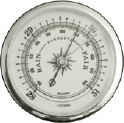
Barometer
A weather instrument used to measure atmospheric pressure. Below 29 is considered rainy or stormy while 30 or above is considered fair weather.

Beaker
A container used to transport, pour, or mix liquids. It cannot measure an exact amount of liquid.

Bunsen Burner
A small burner used in the laboratory. It is connected to a gas source and uses a very hot flame. When heating, the hottest area is at the top of the inner core.
